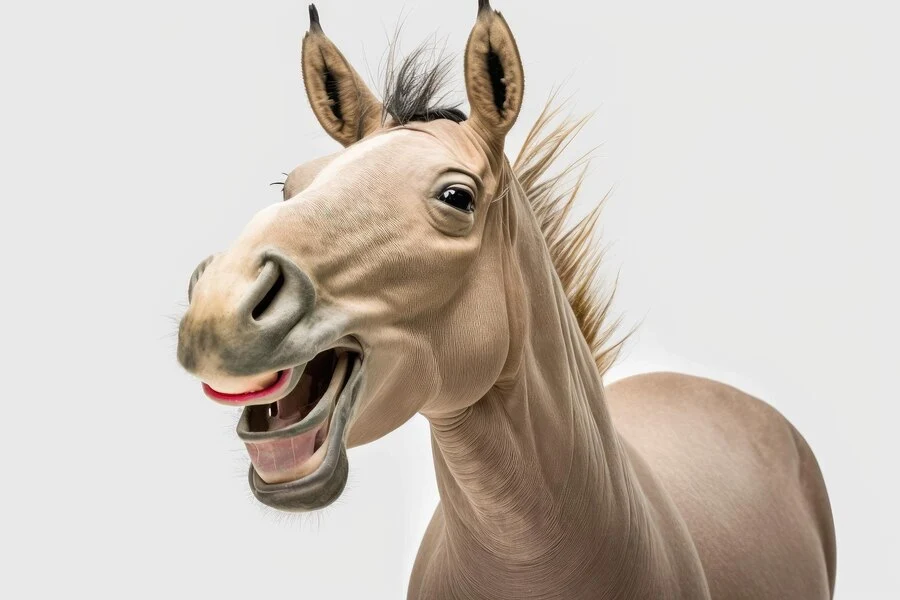
Analysing Horse Racing Form
Key Takeaways: Analysing Horse Racing Form
Understanding the critical aspects of horse racing form analysis
Identifying key factors affecting the outcome of today’s race
Applying things achieved in past races to today’s race prediction
Applying form analysis to make sensible bets
The Basics of Horse Racing Form Analysis
Analysing horse racing form is an essential skill for any punter.
Form analysis usually involves evaluating specific factors in a horse’s past race record. The primary purpose of this is to gauge its ability to win an upcoming race.
There are many factors you can consider when carrying out horse racing analysis.
Understanding these elements can help establish how a horse is likely to perform.
Using a racing information database to check horse racing stats is a common tactic.
Some people like to use professional horse racing tips to back up their own form studies.
Beginners to horse racing form analysis can follow a professional gambler or racing tipster.
This helps inexperienced gamblers to get a feel for what good bets look like.
Then, as they gain experience and develop their own form analysis skills, they can focus more on their own picks.
How To Analyse Horse Racing Form
Doing a good job of analysing racing form means you need to understand four key things:
Past Racing Form – reviewing the past record of a what a horse has done on the racecourse in previous starts, if applicable. Applying a weight or score to what the horse has achieved in the past is vital.
Unknown Factors – these can include things like fitness, gallop experience, trainer form, pedigree, and many other things. There are always factors you won’t be able to consider. But knowing the most important ones in each given race scenario is key.
Quantifying Those Factors – here comes the tricky part. How do all factors covered by the two categories above, stack up? And how big an impact do they have on the horse’s chance?
Odds Analysis – once you’ve weighed everything up, what tale does the market tell? Is your fancy bad value, and smaller odds than make you interested? Or are the odds far higher than you guessed, potentially making the bet great value?
Breaking down each of these elements is vital. Being good at each step is an important skill in it’s own right.
There is no effective horse racing punter who isn’t good at all four of these steps.
In this article, we will focus on item 1 in the list; Past Racing Form.
Key Factors To Check When Analysing Horse Racing Form
Learning which factors should always be checked, and which ones are less vital, are things a gambler learns over time.
There is no substitute for gaining experience. This is all part of the development process, for a gambler learning about form analysis.
But to give you a helping hand, here is a list of some of the key factors checked by experienced gamblers for most races.
Race Type – handicaps, maidens, sellers, Group/Graded races. Learning what these are and their impact on the setup of the race is key information.
Race Class – this one is obvious. If a horse is going to win on merit, it needs to run in the right race. Horses that are racing above their class limit will struggle to win. Others that belong in a higher class may have a huge advantage.
Race Distance – horse races in the UK & Ireland take place from 5 furlongs (1,200 yards) to as far as 4 miles 4 furlongs (7,200 yards). A horse’s distance preference is a major analysis factor. Even a difference of one furlong can have vast implications on the race outcome.
Racecourse – ever heard the expression ‘horses for courses’? The phrase relates to horses preferences over certain racecourses. In the British Isles, the layout of our racecourses varies a lot. Some all-weather courses are very similar, but all still unique. Our turf courses can have wildly-varied layouts. And the different challenges all suit different horses.
Going – Some horses hit the ground hard with their hooves, and are very strong. They can handle heavy, muddy conditions far better than most. Other horses skip over the ground and might be lightly-framed, built for speed. Theses horses usually love a good surface or firmer. You need to work out how much a horse will enjoy today’s ground conditions.
Number Of Runners – smaller fields usually mean smaller odds, but they’re usually easier to win. And some horses prefer racing against fewer opponents. Other horses relish being in big fields of horses, and always show their best in these races.
Draw – in Flat races on turf or all-weather, each horse is drawn in a different starting gate in the starting stalls. Depending on the course, distance and ground, the draw can have a massive effect on a horse’s chances.
Weight – in most races, the horses will not all carry the exact same weight. In handicaps, horses will carry different weights based on their official rating. Measured in imperial pounds, each pound of weight has a bigger impact the further a horse has to carry it. That’s why, especially in longer races, small weight differences can have a lot of impact.
Recent Placings – on a racecard you’ll often see a row of numbers from 0-9, sometimes with letters or symbols. This is a form string. It shows the recent finish placings for the horse. If there is no form string for your horse, that means it’s never raced before. Needless to say, lots of 1/2/3 finishes shows a horse is in great racing form. A series of zeroes or letters usually means the opposite!
Trainer – how good is the trainer of this horse? Are they in good form? Do they usually win this type or class of race? Trainers vary in skill as much as the athletes do in human sports. Knowing the trainers and whether they’re poor, great or somewhere in-between is important. Also, if their horses are all running well, this is usually a great signal. On the flip side, if they have had 50 runners without a win, what makes you think that is about to change?
Jockey – the skill and form of the jockey riding the horse can also vary a huge amount. The best jockeys improve the chance of a horse significantly. A poor or inexperienced rider might be a real detriment to the horse. Again, knowledge acquired through experience and analysis is vital.
Days Since Last Run – some horses run well fresh, which usually means they’ve had at least 40 days off the racetrack. Some trainers are great at getting horses ready to win without a recent run. However, some horses do not run well after a break. If they are heavily-built horses, or lazy in nature during their daily exercise, a lack of recent run is a worry. Also, some horses might run just a day or two after their last start. Are they tired? Did they win easily and seem to have plenty left in the tank? Did they have a very hard race, and come here likely to be tired?
This is a short list of some key factors assessed when analysing a horse race.
Over time you’ll find your own weighting or scoring system for how important these factors are. How much each factor matters is down to the individual gambler.
Even if you don’t apply numbers or a strict scoring system, this list covers much of where top gamblers begin their form analysis.
Very experienced gamblers will review most of these factors and get a ‘feel’ for how they stack up. This enables them to mentally create a profile for each horse, and an overview of their likely performance today.
Historical Performance and Its Impact on Today’s Races
Analysing a horse’s historical performance is critical for understanding its potential in today’s race.
Past runs at the same distance, on the same track, or on similar ground conditions can indicate how a horse might perform.
However, this data should be balanced against current form and recent training reports, where available.
It’s also worth considering the time elapsed since these historical performances.
A horse that was performing well two years, ago but has declined since, is unlikely to suddenly come back to its best.
Conversely, a horse with couple of poor recent runs, but just 2-3 months ago was running well enough to win today, should be respected.
Particularly if there are genuine excuses for a dip in form, such as bad luck in races or poor stable form.
Comparing Horses: A Critical Analysis for Today
Comparing horses in today’s field is a crucial part of form analysis.
This involves examining each contender’s strengths and weaknesses relative to others.
Comparing the respective chances of the runners is key.
Runner comparison can made easier using a numerical scoring system, like I mentioned earlier.
Official Ratings, otherwise known as handicap marks, are a universal rating system used to rank horses.
However, these ratings are not usually changed for a specific race, and will apply wherever a horse runs.
A notable exception to this is the Grand National at Aintree. This race is so unique and high profile that it has a separate set of ‘weights’ given to entered horses. These weights or ratings are specific to the course and distance of the Grand National, and don’t apply anywhere else.
But, for normal races, creating framework for rating horses is a popular comparison method for experienced gamblers.
Simple Example of a Horse Comparison Method
To better help you understand what a rating and comparison method might look like, here is a very simple example.
In this method we will give three horses a score out of 5 for six key factors from our earlier list:
| Going | Distance | Course | Recent Form | Old Form | Trainer | Total | |
| Horse 1 | 4 | 5 | 4 | 4 | 5 | 4 | 26 |
| Horse 2 | 5 | 5 | 5 | 5 | 4 | 4 | 28 |
| Horse 3 | 2 | 5 | 5 | 4 | 5 | 5 | 26 |
In this example, which covers a very limited number of factors, you can see that Horse 2 has a clear edge.
Although this analysis doesn’t always play out during the race, using this kind of process is your first step towards structured, controlled horse racing analysis.
Over time, you will begin to learn which factors seem to be the most important in predicting race outcomes.
You can then begin to adjust your rating systems to give more important to the more important factors.
What Does This Mean?
Let’s say after 3 months of testing, you have noticed that today’s Going is very important. High scoring horses tend to run well, and low scoring horses don’t.
In comparison, the Old Form score doesn’t seem to be anything like as important. This means you’ve seen an even spread of winners from horses scoring 0-5.
To refine your system, you can make a very simple change to the rating system for these two form factors.
For example, you could increase the range of scores allowed in the Going column to 0-10. This would allow you to allocate more points to horses with good form indicators in this category by doubling their old score.
So, for a horse that previously scored 5/5 like Horse 2 from our table, that horse now scores 10/10 for Going. This applies extra ‘weighting’ to the Going score, and that factor will now have a bigger influence on the Total rating.
Moving in the other direction, you could reduce the Old Form rating range from 0-3. This means that even if a horse has excellent old form, it’s lesser importance means that less points are available.
So, a horse that previous scored 3 points for Old Form might now only get 1 or 2 points, depending which side of the line you feel this horse belongs.
By using this simple process to alter the range of possible scores, you are now using a weighting system to ensure that not all form factors are the same.
And in real life, this is indeed the case. Every advanced rating system of this type uses weighting, so we don’t overreact to minor factors but allow the most important factors to carry the most weight.
However, deciding on the importance of the different factors in your system is down to you.
Trainer Form: A Big Influence on Today’s Results
The trainer form is a crucial element in analysing horse racing form.
A trainer with a history of preparing winners for a specific type of race indicates a higher likelihood of success.
If they’ve also been in good recent form, with lots of wins and places over the past few days or weeks, this is a very strong signal for a good run.
Checking trainer form using websites like Racingpost.com or Attheraces.com is simple, but important part of form analysis.
FAQs: Analysing Horse Racing Form Today
How To Start Analysing Horse Racing Form?
Begin by understanding the basics of horse racing form guides, including horse history, course preferences, and ground conditions. Gradually incorporate more complex factors like trainer and jockey form.
What’s the Most Important Factor in Horse Racing Form Analysis?
While there’s no single most important factor, a combination going, distance, race class and current form usually offers a fairly accurate snapshot of a horse’s chance.
How Do Weather Conditions Affect Race Analysis?
Weather conditions can significantly affect a horse’s performance, especially in terms of rainfall. Most horses will have a preference for softer or firmer ground. Some horses need very specific going to show their best form. Identifying these preferences is very important.
Is It Worth Paying Attention to Jockey and Trainer Form?
Absolutely. The form of jockeys and trainers can provide crucial insights into a horse’s potential performance, especially in relation to specific race types. Although most jockeys are capable, it cannot hurt for them to be riding with confidence. And winners breed confidence. Trainer form is even more important, as even the best jockey in the world can’t make an out-of-form horse beat better prepared opponents.
How Often Should I Update My Form Analysis?
It’s essential to update your form analysis process regularly. Some factors like going or how the draw is affecting flat races, literally changes day by day. But the scoring systems you use, if that is an avenue you wish to explore, should only be altered using strong data collected over many weeks of racing.
Conclusion: Enhance Your Betting with Horse Racing Form Analysis
Mastering the art of analysing horse racing form for today’s races is key to making a profit.
By understanding and applying principles of form analysis, you can gain a significant advantage in the competitive world of horse racing betting.
Combined with real data, collected from your own betting activities, or simply compared against results, will bring you a big advantage over most punters.
Remember, successful betting is a blend of knowledge, strategy, and discipline. It’s not just about the data, but how you use it to inform your betting decisions.
PGR Uses Cutting-Edge Form Analysis, Comparing Hundreds of Form Factors, Based On Thousands Of Races
Learning to become a good form analyst takes many years, even with the best training.
Luckily for you, you’re in the right place to save time and let a whole team of experts do the form analysis for you.
Take your betting to the next level today with Paul Gargan Racing.
Join PGR today for expert insights, tips, and strategies that can help you become a more informed and successful gambler.



